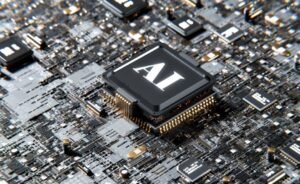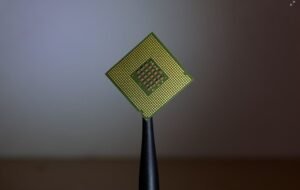Neural Network Structure
Neural networks have become a prominent topic of research and application in the field of artificial intelligence. These computational models are inspired by the structure and functioning of the human brain and are capable of learning from data, performing tasks, and making predictions. Understanding the structure of a neural network is crucial for unleashing its potential and maximizing its effectiveness.
Key Takeaways:
- Neural networks are computational models inspired by the structure and functioning of the human brain.
- The structure of a neural network consists of layers of interconnected nodes called neurons.
- Neural networks learn from data by adjusting the weights and biases of the connections between neurons.
A neural network is composed of layers of interconnected nodes called neurons. These neurons receive input signals, process them, and transmit output signals to other neurons. The structure of a neural network typically consists of three main types of layers: the input layer, one or more hidden layers, and the output layer. Each layer can contain multiple neurons, and the neurons within a layer are interconnected through weighted connections.
*Neural networks can have a varying number of hidden layers, and the depth of the network refers to the number of hidden layers present.*
The inputs to a neural network are fed into the input layer, and the outputs are obtained from the output layer. The hidden layers, as the name suggests, are not directly connected to the input or output layers but play a crucial role in processing the information. Each neuron in a layer is connected to every neuron in the subsequent layer, forming a fully connected network. The weights and biases associated with these connections determine the strength and behavior of the network.
*The weights determine the importance of each input in the overall functioning of the network, while the biases introduce an element of flexibility and adjustability.*
Neural Network Structure Types:
- Feedforward Neural Network: In this type, the information flows in one direction, from the input layer through the hidden layers to the output layer.
- Recurrent Neural Network: Unlike feedforward networks, recurrent networks have connections that form loops, allowing for feedback and the ability to remember previous information.
- Convolutional Neural Network: Designed specifically for image or pattern recognition, convolutional networks have specialized layers that help in analyzing visual data.
The Importance of Neural Network Structure:
The structure of a neural network plays a crucial role in its performance and capabilities. Different structures are suitable for different tasks, and careful consideration must be given to selecting the appropriate architecture. Each layer in the network performs a unique function and contributes to the overall learning and prediction process.
*The structure of a network can significantly impact how well it generalizes to new, unseen data.*
| Network Type | Applications | Advantages |
|---|---|---|
| Feedforward Neural Network | Image Classification, Speech Recognition | Simple structure, easy to implement |
| Recurrent Neural Network | Natural Language Processing, Time Series Analysis | Ability to handle sequential data and memory |
| Convolutional Neural Network | Object Detection, Facial Recognition | Effective pattern recognition in visual data |
Neural networks have revolutionized various industries, from finance to healthcare, by enabling advanced data analysis, predicting outcomes, and recognizing patterns. Understanding the neural network structure allows researchers and practitioners to design and train networks that are tailored to specific tasks and data types.
*The versatility of neural networks stems from their ability to adapt and learn from immense amounts of data.*
Conclusion:
Neural network structure is a crucial aspect of unleashing the power of artificial intelligence. By understanding the layers, connections, and types of neural networks, we gain insight into their strengths and limitations. Harnessing the neural network structure can lead to groundbreaking advances in various fields and drive the development of intelligent systems.

Common Misconceptions
Neural Network Structure
There are several common misconceptions surrounding the structure of neural networks. One misconception is that neural networks have a fixed structure and cannot adapt or change over time. In reality, neural networks have the ability to learn and update their structure based on the data they are trained on. This adaptability is one of the key strengths of neural networks.
- Neural networks can update their structure based on the data they are trained on.
- A fixed structure is not a characteristic of neural networks.
- Adaptability is one of the key strengths of neural networks.
Neural networks can only solve simple problems.
Another common misconception is that neural networks are only capable of solving simple problems. While it is true that neural networks can excel at tasks such as image recognition or natural language processing, they are not limited to simple problems. Neural networks have been used successfully in complex tasks like autonomous driving, stock market prediction, and medical diagnosis.
- Neural networks can solve complex problems, not just simple ones.
- They have been applied in autonomous driving, stock market prediction, and medical diagnosis.
- Neural networks are not limited in their problem-solving capabilities.
Neural networks are always accurate and never make mistakes.
Contrary to popular belief, neural networks are not infallible and can make mistakes. Despite their impressive performance in many tasks, they are still susceptible to errors, especially when trained on incomplete or biased data. Just like any other machine learning algorithm, neural networks are subject to limitations and can produce incorrect results if not properly trained or validated.
- Neural networks can make mistakes, they are not infallible.
- Incomplete or biased data can affect their performance.
- Training and validation are crucial for minimizing errors in neural network outputs.
Neural networks work exactly like the human brain.
One of the most common misconceptions is that neural networks function in the same way as the human brain. While neural networks were inspired by the structure of the brain, the level of complexity and the biological processes happening in the brain are far more intricate and vast compared to artificial neural networks. Neural networks are simplified mathematical models that simulate certain aspects of how the brain might process information.
- Neural networks are simplified mathematical models inspired by the brain.
- They do not replicate the biological complexity of the human brain.
- Artificial neural networks simulate certain aspects of brain processes, but not all of them.
Neural networks require huge amounts of computational power.
While it is true that training and running complex neural networks can require significant computational resources, it is a misconception to assume that all neural networks are computationally demanding. There are techniques available to optimize the performance of neural networks, such as using smaller network architectures, utilizing efficient algorithms, and leveraging specialized hardware like GPUs (Graphics Processing Units).
- Not all neural networks require huge amounts of computational power.
- Performance optimization techniques can help reduce computational requirements.
- Using smaller network architectures and specialized hardware can improve efficiency.

Table 1: Comparing Neural Networks to the Human Brain
The human brain is often considered the epitome of intelligence, but how does it compare to a neural network? This table illustrates some interesting similarities and differences between the two.
| Aspect | Human Brain | Neural Network |
|---|---|---|
| Processing Speed | Approximately 20 million calculations per second | Can perform trillions of calculations per second |
| Learning Ability | Capable of learning and adapting to new information | Can learn through massive amounts of labeled data |
| Fault Tolerance | Can suffer from brain damage or cognitive decline | Resilient to hardware failures with redundant connections |
| Scalability | Cannot increase in size or complexity | Can be easily scaled up by adding more computational units |
Table 2: Applications of Neural Networks
The applications of neural networks are vast, ranging from image recognition to natural language processing. This table showcases some intriguing uses of this powerful technology.
| Application | Description |
|---|---|
| Medical Diagnosis | Assisting doctors in accurately diagnosing diseases |
| Autonomous Driving | Enabling self-driving cars to perceive and navigate their surroundings |
| Financial Predictions | Forecasting stock market trends and optimizing investment strategies |
| Speech Recognition | Converting spoken language into written text with high accuracy |
Table 3: Popular Neural Network Architectures
Neural network architectures are the building blocks of AI models. This table presents some widely recognized architectures used in various domains.
| Architecture | Domain |
|---|---|
| Convolutional Neural Networks (CNN) | Computer Vision |
| Recurrent Neural Networks (RNN) | Natural Language Processing |
| Generative Adversarial Networks (GAN) | Artificial Creativity |
| Transformers | Machine Translation |
Table 4: Neural Network Training Algorithms
The training process is essential for neural networks to learn and improve their performance. This table highlights different algorithms used for network training.
| Algorithm | Description |
|---|---|
| Backpropagation | Adjusts the weights based on error gradient to minimize the loss |
| Stochastic Gradient Descent (SGD) | Updates weights using a randomly selected subset of training data |
| Adam Optimizer | Adaptive algorithm combining gradient and momentum-based methods |
| Genetic Algorithms | Evolutionary optimization inspired by natural selection |
Table 5: Neural Network Performance Metrics
Evaluating the performance of neural networks is crucial. This table showcases the commonly used metrics to measure their effectiveness.
| Metric | Description |
|---|---|
| Accuracy | Percentage of correctly classified instances |
| Precision | Proportion of correctly identified positive instances |
| Recall | Proportion of positive instances correctly identified |
| F1 Score | Harmonic mean of precision and recall |
Table 6: Neural Network Advantages
Neural networks possess several advantages, which contribute to their popularity. This table highlights some of their key strengths.
| Advantage | Description |
|---|---|
| Non-linearity | Capable of learning complex non-linear relationships in data |
| Parallel Processing | Performing multiple computations simultaneously |
| Flexibility | Adaptable to diverse tasks and data types |
| Robustness | Able to handle noisy, incomplete, or ambiguous data |
Table 7: Neural Network Limitations
Although powerful, neural networks also have certain limitations. This table sheds light on some of the challenges associated with their use.
| Limitation | Description |
|---|---|
| Black Box Nature | Difficult to interpret and understand the decision-making process |
| Large Training Data | Require substantial amounts of labeled data for effective learning |
| Computationally Intensive | Training and inference processes can be time-consuming |
| Vulnerable to Adversarial Attacks | Can be manipulated by input modifications with minimal effects on humans |
Table 8: Neural Network-Related Technologies
Various technologies and tools are used in conjunction with neural networks to enhance their capabilities. This table provides an overview of some significant advancements.
| Technology | Description |
|---|---|
| GPU Acceleration | Utilizing the power of graphics processing units for faster computations |
| Deep Learning Frameworks | Software libraries that simplify neural network implementation |
| Transfer Learning | Applying knowledge from pre-trained models to improve learning on new tasks |
| Reinforcement Learning | Trial and error-based learning guided by rewards or penalties |
Table 9: Neural Networks in Popular Culture
Neural networks have not only impacted technology but also made their presence felt in popular culture. This table highlights some notable references in movies and books.
| Reference | Description |
|---|---|
| The Matrix | An entire simulated reality controlled by neural networks |
| Blade Runner | Artificial beings known as “replicants” created using neural networks |
| Ghost in the Shell | Characters with neuron-like networks in their cybernetic brains |
| Neuromancer | A sci-fi novel exploring a future dominated by artificial intelligence |
Table 10: Neural Networks and Future Possibilities
Neural networks continue to advance at an incredible pace, opening up exciting possibilities for the future. This table presents some speculative yet intriguing applications under exploration.
| Possibility | Description |
|---|---|
| Brain-Computer Interfaces | Directly connecting neural networks to biological brains for seamless interaction |
| Artistic Creativity | Generating novel artistic creations through neural network-driven algorithms |
| Medical Breakthroughs | Discovering new treatments and insights in complex medical conditions |
| Quantum Neural Networks | Merging the fields of quantum computing and neural networks for enhanced capabilities |
Neural networks have revolutionized the field of artificial intelligence and demonstrated remarkable performance across various domains. From surpassing human capabilities in pattern recognition to enabling autonomous systems, their impact is undeniable. As technologies supporting neural networks continue to advance, there is a tremendous opportunity for further exploration and innovation. With the ability to learn, adapt, and draw insights from massive datasets, neural networks represent a significant leap towards intelligent machines. Exciting possibilities lie ahead as researchers and developers continue to push the boundaries of this cutting-edge field.
Frequently Asked Questions
What is a neural network?
A neural network is a computational model inspired by the structure and function of the human brain. It consists of interconnected layers of artificial neurons that process and transmit information to solve complex problems.
What is the structure of a neural network?
A neural network typically consists of an input layer, one or more hidden layers, and an output layer. Each layer contains multiple neurons that perform computations and transmit signals to the next layer.
How does information flow in a neural network?
In a neural network, information flows forward from the input layer through the hidden layers to the output layer. Each neuron in a layer receives inputs from the previous layer, applies a mathematical transformation to these inputs, and passes the result to the next layer.
What is the purpose of the input layer in a neural network?
The input layer is responsible for receiving and encoding the initial input data into a format that the neural network can understand. It has one neuron per input feature, and the values of these neurons represent the input data.
What is the role of hidden layers in a neural network?
Hidden layers in a neural network perform the intermediate computations required to transform the input data and extract meaningful features. These layers are not directly connected to the input or output, making their operations hidden.
How are weights and biases used in a neural network?
Weights and biases are parameters in a neural network that determine the strength and significance of the connections between neurons. Weights adjust the importance of input signals, while biases provide an additional parameter to control neuron activation.
What is the activation function in a neural network?
An activation function is a mathematical function applied to the output of each neuron in a neural network. It introduces non-linearity and determines whether a neuron should be activated or not based on its inputs. Common activation functions include sigmoid, ReLU, and tanh.
What is backpropagation in neural networks?
Backpropagation is a widely used training algorithm for neural networks. It involves adjusting the weights and biases of the network based on the difference between the predicted output and the expected output. This process enables the network to learn from its mistakes and improve over time.
Can neural networks be used for different tasks?
Yes, neural networks are versatile and can be used for various tasks such as image recognition, natural language processing, speech recognition, and more. By adjusting the structure and parameters of the network, it can be tailored to different applications.
What are the advantages of using neural networks?
Neural networks can learn from large amounts of data, make complex decisions, and generalize information from incomplete or noisy input. They excel in pattern recognition, prediction, and solving problems that are difficult to solve with traditional algorithms.




